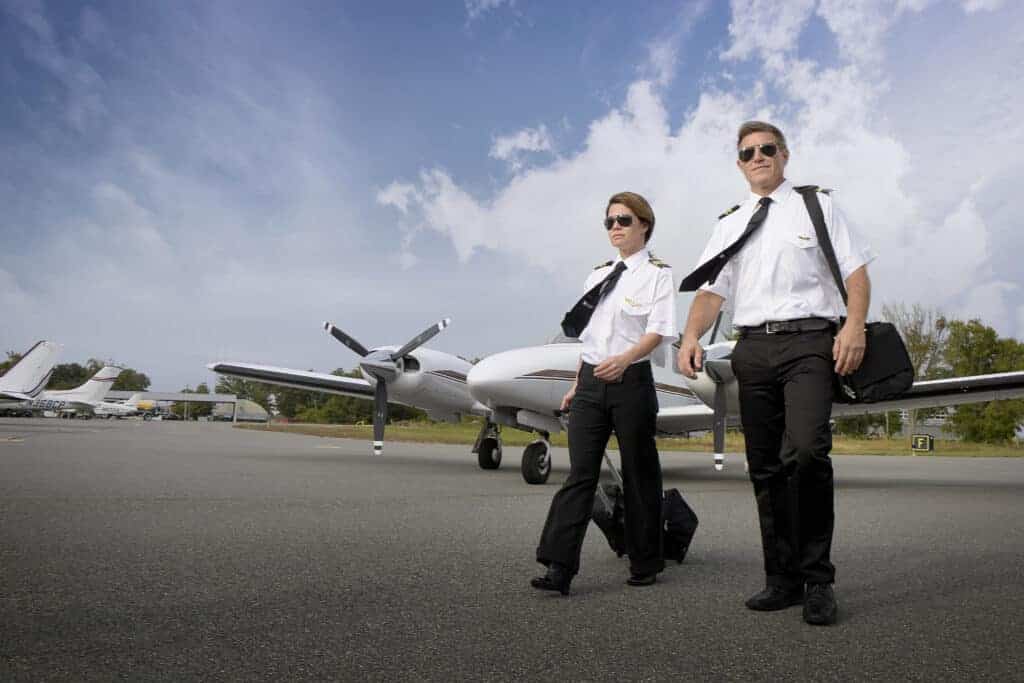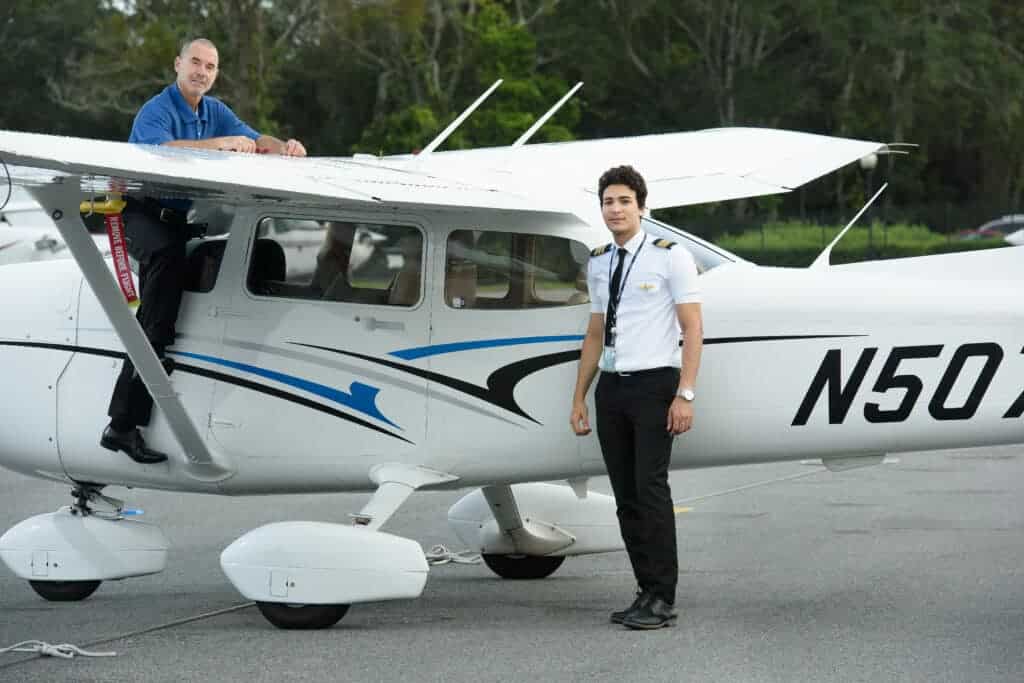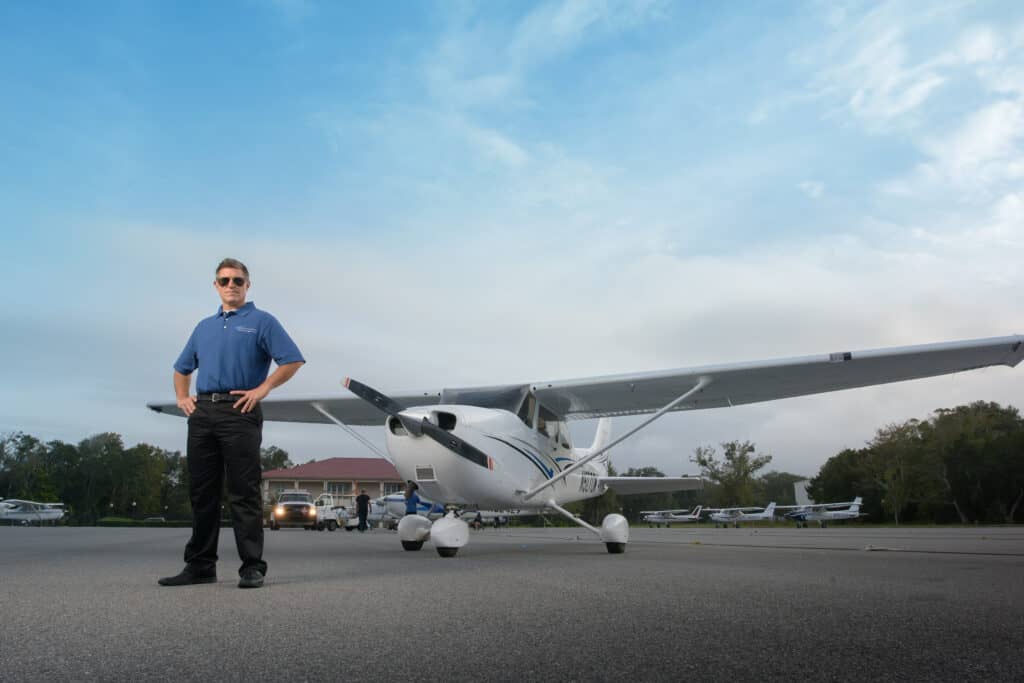How to Become a Pilot: The Ultimate 8-Step Guide for Success

Why Learning How to Become a Pilot Matters
The sky is no longer the limit—it’s the starting point. The demand for skilled pilots is surging across the globe. Airlines are expanding, private aviation is growing, and flight schools are training more students than ever before. Whether you’re a student dreaming of jet engines or a professional looking to switch careers, now is one of the best times in history to learn how to become a pilot.
But the process can seem overwhelming at first. With multiple licenses, medical exams, flight hours, and regulations, knowing where to begin is half the battle. That’s where this guide comes in.
From defining your pilot goals to choosing the right training path, passing FAA exams, and exploring career options, this guide breaks everything down in a clear, structured way. Whether your goal is to fly for a major airline, teach others as a flight instructor, or enjoy weekend flights for fun, this guide will show you how to become a pilot—step by step.
Step 1: Decide What Type of Pilot You Want to Become
Every journey into aviation starts with one critical question: What kind of pilot do you want to be? If you’re serious about learning how to become a pilot, this decision is foundational—it influences your training, cost, time commitment, and future flying privileges.
Some people aim to fly for fun on weekends. Others want to sit in the captain’s seat of a commercial airliner. The difference between becoming a private pilot, commercial pilot, or airline transport pilot (ATP) isn’t just about ambition—it’s about understanding the structure of pilot licensing.
If your dream is to travel solo or with friends, a Private Pilot License (PPL) may be your best starting point. If you’re hoping to turn your passion into a profession—flying for hire, charter, or eventually airlines—you’ll need to progress from PPL to Commercial Pilot License (CPL), and ultimately, Airline Transport Pilot License (ATPL).
On the other hand, if you’re looking for a more casual, cost-effective route into aviation, sport or recreational pilot certificates allow you to fly smaller, lighter aircraft with less training—but also more limitations.
Choosing the right path is the first strategic move in mastering how to become a pilot. Your license defines your access to the sky—so make sure it matches your vision.
Step 2: How to Become a Pilot by Meeting FAA Requirements
Once your pilot goals are clear, the next step in learning how to become a pilot is confirming that you meet the FAA’s baseline requirements. This isn’t just paperwork—it’s the foundation of your eligibility to fly.
To start, age plays a crucial role. You must be:
- 16 years old to fly solo
- 17 to obtain a Private Pilot License (PPL)
- 18 to hold a Commercial Pilot License (CPL)
- 23 to qualify for the Airline Transport Pilot License (ATPL)
Language proficiency is another must. Since English is the international language of aviation, all pilots must be able to read, write, speak, and understand English clearly to communicate with air traffic control and ensure safety in all types of airspace.
Medical fitness is perhaps the most overlooked yet essential step in understanding how to become a pilot. You’ll need to pass an FAA medical exam administered by an Aviation Medical Examiner (AME). Depending on your training path:
- Class 3 medical is needed for private pilots
- Class 2 for commercial operations
- Class 1 for airline transport and career pilots
Finally, educational background matters—though not as much as many think. A college degree isn’t required to become a pilot in the U.S. A high school diploma or equivalent is enough to begin training. However, if you’re aiming to work for major airlines in the future, a degree can give you an edge in competitive hiring environments.
This stage is where your aviation journey becomes real. When you meet these requirements, you’ve earned your clearance to take off on the road to becoming a licensed pilot.
Step 3: Choose a Flight School and Start Training
Choosing the right flight school is where the journey truly begins. This decision sets the tone for your experience, the structure of your training, and the quality of instruction you’ll receive. If you’re serious about learning how to become a pilot, selecting the right school isn’t optional—it’s strategic.
There are two primary types of FAA-approved training programs:
Part 61 flight schools offer flexible training schedules and personalized instruction. They’re ideal for students with busy lives or those learning part-time.
Part 141 flight schools follow a more structured, accelerated syllabus that’s ideal for career-track pilots. These schools are often approved for international students and eligible for veteran education benefits.
Most schools include both ground school (classroom or online instruction) and flight training in the air. Ground school teaches aerodynamics, weather, FAA regulations, navigation, and aircraft systems. Once you’re airborne, you’ll begin logging time with an instructor in aircraft like the Cessna 172 or Diamond DA40.
You’ll also encounter tools like flight simulators and digital logbooks. Ask if the school has full-motion simulators, how often you’ll fly per week, and how instructors are assigned.
When evaluating how to become a pilot, this is the phase where you shift from theory to action—by selecting a training environment that’s FAA-certified, professional, and aligned with your aviation goals.
Step 4: How to Become a Pilot by Passing FAA Exams and Checkrides
Studying is just as important as flying when you’re figuring out how to become a pilot. Every pilot certificate—whether it’s for private, commercial, or airline-level flying—requires you to pass a series of FAA evaluations. These include a written exam, an oral exam, and the practical checkride.
The FAA knowledge test (also known as the written exam) covers aerodynamics, weather, navigation, regulations, aircraft systems, and safety. You’ll usually take this after ground school and before your final flight exam. Most students study using FAA handbooks, online test prep platforms, or classroom courses.
Once you’ve logged the required hours, your instructor will endorse you to take the checkride—a two-part evaluation conducted by an FAA Designated Pilot Examiner (DPE). It begins with an oral exam, where you’ll answer scenario-based questions and explain regulations, charts, and procedures. Then, you’ll complete a practical flight test where the examiner observes how well you perform maneuvers, communicate with ATC, and handle in-flight decision-making.
Students often fail checkrides due to:
- Inadequate preflight preparation
- Poor weather judgment
- Weak performance on emergency procedures
- Nervousness under pressure
To avoid these pitfalls, your flight school will typically schedule multiple mock checkrides beforehand. When you pass your FAA exams, you’ve officially proven that you know how to become a pilot—not just in theory, but in real-world application.
Step 5: Build Flight Time and Gain Ratings
Earning your pilot license is a huge milestone—but it’s not the finish line. In fact, building flight time and gaining additional ratings is what truly shapes your journey in how to become a pilot—especially if you’re headed for a professional aviation career.
Each license level comes with a minimum number of logged flight hours:
- Private Pilot License (PPL): Minimum of 40 hours (Part 61) or 35 (Part 141)
- Commercial Pilot License (CPL): 250 hours total time
- Airline Transport Pilot License (ATPL): 1,500 hours total time
To reach those hours, pilots log time through solo flights, cross-country flights, night flying, and simulated instrument flying. Some work as flight instructors to build hours quickly while earning income. Others build time through scenic tours, banner towing, aerial photography, or ferrying aircraft.
You’ll also have the option to earn additional ratings, which expand your skills and open new flying privileges:
- Instrument Rating (IR): Fly safely in clouds or low visibility
- Multi-Engine Rating: Operate aircraft with two or more engines
- Seaplane or Tailwheel Endorsement: Specialty skills for unique aircraft
- Certified Flight Instructor (CFI): Teach others while logging paid hours
This stage of how to become a pilot is about momentum. Every flight you log and every new skill you master moves you closer to your aviation goals—whether that’s flying for a living or soaring for the love of it.
Step 6: How to Become a Pilot and Launch Your Career or Fly Privately
Earning your license is a proud achievement—but now what? The next step in learning how to become a pilot is deciding how you want to use your certification: as a career-builder or a personal passion.
If you’re pursuing aviation professionally, entry-level jobs often include:
- Flight Instructor (CFI): A fast, affordable way to gain hours while teaching students
- Charter and Cargo Flying: Transport people or packages on short routes
- Regional Airlines: Many carriers hire pilots once they meet the 1,500-hour ATP requirement
- Corporate Aviation: Flying for businesses, executives, or medical transport
Career-track pilots typically build hours quickly, network in the aviation industry, and pursue airline or business aviation opportunities as they gain experience.
But not every path leads to a cockpit job. Many choose to fly for pleasure after earning a Private Pilot License (PPL). Recreational flying opens the door to:
- Scenic weekend getaways
- Flying clubs and shared aircraft
- Volunteer opportunities like Angel Flights or Civil Air Patrol
- Owning or co-owning a personal aircraft
Whichever path you choose, this phase of how to become a pilot is about turning skills into real-world opportunities—whether for income, exploration, or pure enjoyment.
Step 7: Stay Current and Compliant as a Certified Pilot
Becoming a pilot doesn’t end with getting your license—it’s a lifelong commitment to safety, proficiency, and responsibility. Once certified, the next essential piece in how to become a pilot is staying current with FAA requirements.
Here’s how certified pilots maintain legal flight privileges:
Currency Requirements for PIC (Pilot in Command): To carry passengers, you must complete three takeoffs and landings in the previous 90 days—and they must be at night if you’re flying after dark.
Biennial Flight Review (BFR): Every two years, all pilots must complete a 1-hour ground and 1-hour flight review with a Certified Flight Instructor. It’s not a test—but it’s required to continue flying.
Medical Certificate Renewals: Depending on the class (1, 2, or 3), your FAA medical certificate must be renewed every 6–12 months (Class 1) or up to 5 years (Class 3 if under 40).
Staying current is not just about regulations—it’s about staying sharp. Many pilots join safety seminars, attend FAA webinars, or participate in local pilot communities to maintain their edge.
This step in how to become a pilot ensures that you’re not just legal—but confident, competent, and committed to safe flying long after checkride day.
Step 8: How to Become a Pilot with Global Career Opportunities
In today’s aviation world, your wings can take you far beyond your local airport. The final stage in learning how to become a pilot is understanding how to position yourself for international opportunities and cross-border career growth.
Many aspiring aviators from around the world come to the United States to train under the FAA system because it’s globally respected, English-based, and offers year-round flying weather in states like Florida, Arizona, and California. International students typically train on an M-1 visa, then return home or convert their licenses to meet local aviation authority requirements.
If you’re looking to work internationally, you’ll need to understand license conversion rules:
- EASA (Europe) may require additional theory exams and flight tests
- DGCA (India) requires specific ground school subjects and hours logged in approved aircraft
- ICAO (global standard) ensures many countries recognize FAA credentials with minimal retraining
With the global pilot shortage expected to intensify through 2030, now is a strong time to enter the industry. Airlines in Asia, the Middle East, and Africa are especially eager to recruit well-trained pilots with FAA backgrounds.
This stage of how to become a pilot expands your horizon—literally. Your training may start in your home country, but your cockpit could be anywhere in the world.
Conclusion
Learning how to become a pilot isn’t just about passing tests or logging hours—it’s about turning ambition into action. Whether you dream of flying for a living or exploring the skies on your own terms, the steps are clear: choose your path, meet the FAA’s requirements, train with focus, and stay current with your skills.
From solo takeoffs to commercial certifications, each phase brings you closer to the cockpit—and the freedom, responsibility, and thrill that come with it. Aviation isn’t just a career. It’s a mindset, a skillset, and for many, a calling.
Florida Flyers Flight Academy has helped thousands of students worldwide learn how to become a pilot with confidence. Whether you’re an international student, a full-time career changer, or a weekend flyer in the making, we offer:
- FAA-approved training under Part 141 and Part 61
- Hands-on flight experience with certified instructors
- Streamlined programs from PPL to CPL to CFI
How to Become a Pilot – FAQ Section
How long does it take to become a pilot?
It depends on your goals. To become a private pilot, most students take 4–6 months. To become a commercial pilot, it can take 12–18 months if training full-time. Airline transport pilot (ATP) certification requires 1,500 hours and may take 2–3 years total.
What’s the total cost to become a commercial pilot?
In the U.S., the average cost to go from zero experience to a Commercial Pilot License (CPL) is between $60,000 and $90,000. This includes your PPL, Instrument Rating, and CPL. Prices vary based on school, aircraft, and location.
Can I become a pilot without a degree?
Yes. The FAA does not require a college degree to become a pilot. However, some major airlines prefer or require a bachelor’s degree—especially at the ATP level.
What’s the minimum age to start flight training?
You can start flight training at any age, but you must be 16 to solo and 17 to earn a Private Pilot License. Most students begin training in their late teens or early 20s, but it’s never too late to start.
How many flight hours do I need to get hired by an airline?
Most U.S. airlines require 1,500 total flight hours for ATP certification, which is the standard for airline employment. However, some regional airlines and international carriers may have different hour and license requirements.
Contact the Florida Flyers Flight Academy Team today at (904) 209-3510 to learn more about how to do the foreign pilot license conversion in 4 steps.


















